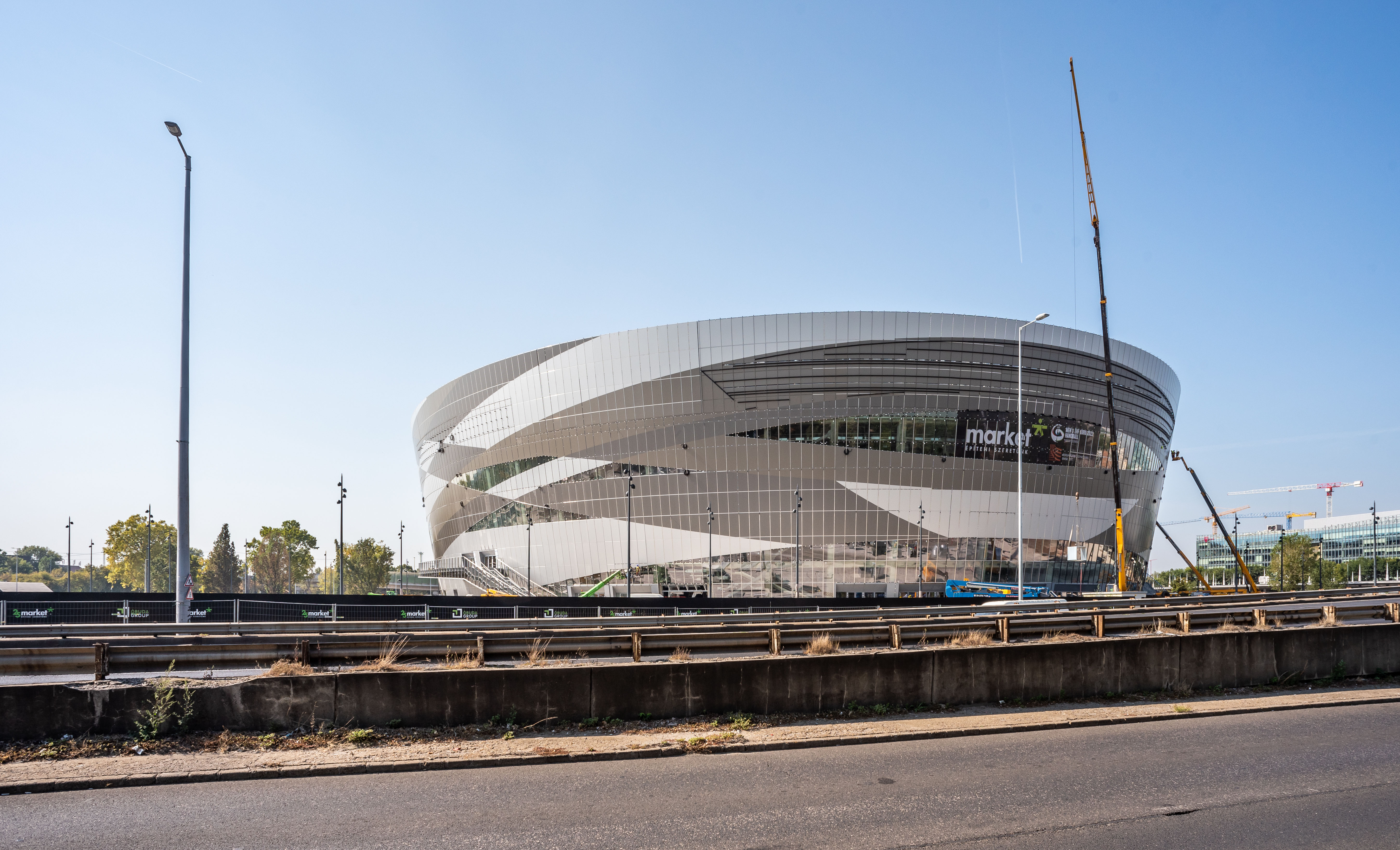The old building complex on the site of the recently handed over MVM Dome sports arena was the accommodation of the 1st Infantry Regiment- It was known as the Franz Joseph I infantry barracks. It was originally an urban pasture and a site for watering called the Nagy Sertéstó [Great Pig Lake]. The lake was drained and filled in by the 1880s, and the area was carefully parcelled out.
In 1894, a law authorized the Ministry of Finance to sell the Újépület [New Building] in the centre of the capital (which was the largest barracks in Pest) and the Károly and József Barracks. The buyer was the capital and decided to dismantle this huge military monster.

The Újépület (Photo from 28 November 1897, Uj Idők)
The need for accommodation due to the lack of the Újépület was to be met by several barracks farther from the city centre. Between 1895 and 1998, a barracks was built in Haller Street, on today's Hungária Boulevard, along Soroksári Street, in Timót Street, and in two places at Népliget. One was the hussar barracks named after Archduke Joseph (later the State Mint operated here until 2004), and the other was the Franz Joseph I barracks. The management of Budapest handed over the area of more than 60,000 square meters opposite the Népliget to the Army free of charge.
The plans were made by József Benedicty. The architect first managed the work of public buildings, hospitals and grain warehouses in the service of the capital and then of the Ministry of Commerce, but he also proved his ability in barracks design. In 1895–96 he directed the construction of the barracks of the 1st Budapest Hussar Regimen, in 1898 the Radetzky-barracks was remodelled based on his plans. In 1901, he led the construction of the gendarme barracks on Böszörményi Road. Franz Joseph I infantry barracks can be considered as his main work.
The building complex, completed on 30 April 1898, was built on a floor area of 13,000 square meters and consisted of 14 pavilion-like buildings. It was capable of accommodating three battalions as well as the central armory. The 1st Infantry Regiment already moved into its new home in September of that year. The so-called main building overlooking Üllői Road was completed the earliest.

The main building of the barracks from Üllői Road on a postcard circa 1900 (Source: Ferencváros Local History Collection)
On the ground floor, additional command offices, on-duty officer and checkout rooms, an officer gym and fencing room, and rooms and classrooms for accounting schoolchildren were set up. On the first floor were the offices of the regimental commander and the staff officers, and the archives. On the second floor was the officers' meeting room, complete with a gallery for the orchestra and the audience, with an entrance hall and cloakrooms, and two gallery stairs. The officers' library and the officers' kitchen also operated on this level.
Three buildings of exactly same layout served to accommodate the first, second, and fourth battalions. In addition to the regimental commander, two captains, four lieutenants, 12 non-commissioned officers, 12 married junior officers, 53 musicians, and about two thousand privates served in the barracks. After the outbreak of World War I, the barracks became the station of two more infantry regiments. The soldiers of the 29th and 30th regiments also left for the Italian front from here.

The main building of the barracks from the founding square in 1908 (Source: Ferencváros Local History Collection)
The main building of the barracks from Üllői Road (Source: Ferencváros Local History Collection)

Farewell of the soldiers heading for the front in 1914 (Postcard from the private collection of András Szántó)
From 1939, the barracks became an important officer training place, the Bolyai János Honvéd Technical Academy. From 1947, the institution served as the home of the seconded academic regiment of the Honvéd Kossuth Academy, from 1957 it was called the United Officer's School, and from 1967 it operated as the Zalka Máté Military Technical College. More and more additional buildings have been erected in the area, with 32 main and dozens of outbuildings forming the building stock of the barracks area in recent decades.
After the change of regime, it became the Bolyai János Military Technical College. At the turn of the millennium, the integration of military higher education institutions took place, so the college became one of the faculties of the Zrínyi Miklós National Defense University.

Accommodation buildings of the former 3 battalions of the barracks in 2008 (Source: Ferencváros Local History Collection)
In April 2008, the Department of Defense sold the entire facility. After several changes of ownership, the entire building complex was demolished in the same year. For a long time, one could only see piles of debris in the area, and over the years nature tried to take back what was originally its: bushes and trees grew, everything was covered with vegetation.

The so-called formation square in 2008 (Source: Ferencváros Local History Collection)
In 2018, a new chapter began again: Hungary won the right to host the 2022 European Handball Championship. The following year, construction has already begun to build one of the continent’s largest-sized and most-capacity sports halls. The area, which has served military purposes for so long, will now try to meet the needs of sporting and cultural events. Currently, the main role is played by handball matches, the Hungarian national team has already been able to try out the facility three times, and we can be sure that the fans will soon get used to this new venue as well.

The handball arena in Budapest (Photo: Róbert Juharos / pestbuda.hu)
Cover Photo: The main building of the Franz Joseph I infantry barracks from Üllői Road on a postcard circa 1900 (Source: Ferencváros Local History Collection)




































Hozzászólások
Log in or register to comment!
Login Registration